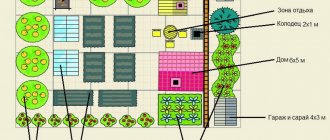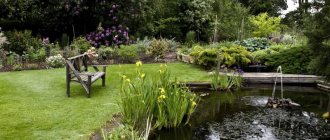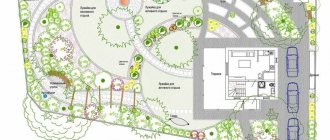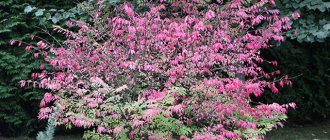Basic principles of the Japanese garden
In the understanding of a European, the culture of the Japanese is very different from the generally accepted one. Eastern philosophy, manifested in all areas of life, is aimed at reflection and worldview. Japanese gardens are a guide to the worldview of this people.
It has long been known that being in a Japanese garden has an excellent effect on health, and also relaxes a person and distracts from unnecessary stress. In such a conducive place you can prepare well before difficult physical or creative work.
Before you start creating a Japanese-style corner on your site, you need to study the features of this style.
There are several types of Japanese gardens:
- flat (hira-niva)
- hilly (tsukiyama).
Their components are also different.
A flat garden is usually decorated with sand, small stones and moss. A dry sandy stream is created, and around there are groups of stones.
A hilly garden requires larger structural stones.
The largest and most elongated stone is placed vertically and symbolizes the mountain peak, while flat stones form the slopes of the “hill”. Another important point is the scale of the garden, that is, the smaller the area, the richer the composition of the garden will be. But at the same time, it should not create the impression of isolation.
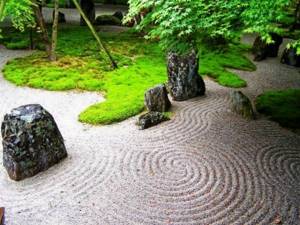
There are several equally important aspects.
So, for example, a Japanese garden in landscape design must be square or rectangular in shape and directed to the east. It should be possible to see and admire anything in the garden from any corner of the garden.
It is necessary to avoid repetitions in the composition of a Japanese garden and be sure to use an odd number of elements. But, nevertheless, each such composition must be completed and constitute a separate element.
The landscape design of a Japanese garden must include five mandatory criteria.
The first of them, according to Asian philosophy, is considered spiritual. It contains the main concept of the future landscape.
The remaining components of the garden organization are natural:
- water;
- trees, grass, flowers;
- stones;
- small architectural forms.
In order to create the right atmosphere of a Japanese garden, it is necessary to combine all these components together. Only then will the garden composition acquire real, genuine harmony and beauty, which will create the true spirit of Japan.
It is the symbolism of the elements that fills different corners of the Japanese garden with meaning. Stones, for example, serve as a symbol of mountains and man’s desire to rise to the sky, to the gods. Stones also serve as a symbol of strength and perseverance. Water, on the contrary, is a moving element, which is symbolized with life and energy.
Plants, with their color scheme, pacify a person, show him the movement of life due to the successive flowering.
Landscape design in Japan is divided into several different types of landscapes. For example, there are gardens with ponds, streams and waterfalls, that is, with real water. But also in some gardens or parts of the garden you can see an imitation of the water element. These are so-called dry streams.
Water in such corners of the garden is replaced with white gravel, stones or sand and, if it is sand, then lines similar to the movement of water are drawn with special tools.

Stones are strong accent elements that carry a deep philosophical meaning, and special attention is paid to their appearance, as well as to their placement. Large untreated natural stones are suitable for this role.
To make them more picturesque, they can be covered with mosses and lichens. For more “live” compositions, stones are placed in groups, and then they symbolize the infinity of the universe.
Their number must be a multiple of 3. In this case, the stones can form a triangle, symbolized in eastern countries, nature itself.
It is also customary to place boulders of different sizes in this triangle and the largest of them will symbolize a mountain or a large woody plant, small stones will symbolize flowing water. Stones are usually placed from left to right, because this is how movement along paths in the garden is organized.
As already mentioned, only natural materials are used. Paths are laid out of stones, bridges are installed, and dry ponds and streams are made. The material for the paths can be sandstone or large slate.
Distinctive features of Japanese landscape design
The style of an oriental garden is determined by the nature of the state of Japan, more than half of whose area is occupied by mountainous areas. The landscapes are dominated by rocks, mountain streams, lakes, and the seashore. The elements of water, stone and plants predominate here.
Therefore, Japan is characterized by a muted color scheme of gray-brown and greenish tones. Floral elements complement the picture; this is the philosophical principle of non-interference in nature. Nature itself is beautiful and harmonious. It doesn't need decoration.
The area of a Japanese green corner is often small, but all elements are carefully thought out. Photo example:
You may be interested in: How to design a garden that blooms in 4 seasons: tips from landscape designers
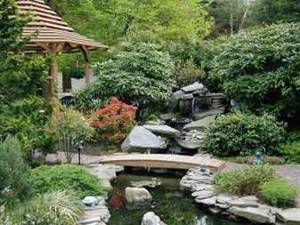
Pagodas in the garden
There may also be pagodas in the garden.

These are square towers, most often made of stone, which symbolize the temple. The photo shows that they consist of several necessarily odd tiers, the size of which decreases as they approach the upper part.
Like the lanterns, they have a flat roof and base. As a rule, they have a height of 1-3 meters. Groups of stones or bushes of not very large height and size will look good around them.
An excellent place for a pagoda would be the shore of a pond or a well-observed and open corner of the garden.
Selection and site requirements
The Mediterranean area is strewn with rocky cliffs and slopes, which is why this style is considered a real find for owners of plots located on hilly areas. Here it will be most successful to recreate the natural landscape without resorting to any complex agricultural techniques.
Familiarize yourself with the features of the Dutch landscape design style.
If the territory is located on a plain, it will be necessary to create artificial hills. To do this, the territory should be divided into separate zones using stairs, rocky walls, terraced slopes or hedges.
0eac748393ead4ec5daed378e6e3c423.jpe 52346a2519757d21c86950fc908def80.jpe
abee73be7ac1ccc56fac93691399b396.jpe bacf565be34d28ed90d574fbc993d9ac.jpe 1237cf550efc8713c863ebbf0d1a79a2.jpe
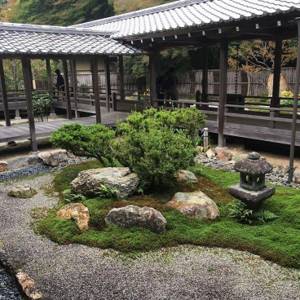
863ef30f2f23e3d6b91bbf51b503e4b4.jpe
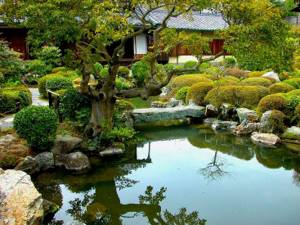
Reed fountain - tsukubai
Tsukubai is another significant element of Japanese garden landscape design.
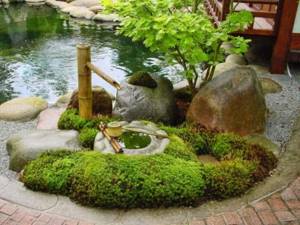
Initially, it was a vessel for washing hands before the tea ceremony, but nowadays it has acquired a decorative and cultural character.
Tsukubai is a round-shaped stone bowl with a bamboo tube attached to it, which conducts water to the bowl. The water flows into the drainage under the bowl, which most often consists of small pebbles.
See Tsukubai in action:
Sculptures in Japanese gardens
Sculptures in the national style are mostly used to decorate many ethnic gardens.
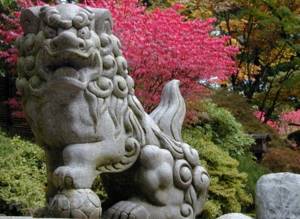
But with the Japanese garden, everything is much more complicated, since sculptures are not typical for this style of landscape design, if we talk specifically about the traditional style. But if the decision has already been made, then these could be stylized oriental animals, for example, a lion or a crane.
Landscape style
Landscape style in landscape design is complete naturalness and the absence of strict and regular geometric shapes and figures.

Here, work to improve the landscape is carried out as discreetly as possible. This garden is distinguished by a combination of romance and rationalism, elegance and solemnity.
6fce1ca9588c3eb8dc4e8678b210873b.jpe ceb4b575faac18a3b65fad0c565028ae.jpe 85dcce713342caa732e8c39bdbec3fac.jpe e6ee824031572d4496e9c8f4e945e1 43.jpe 2138bb295db618f81bd4a87e86bd30ef.jpe 789dbdaa6f51903279495946484eb725.jpe dfe34f5ff2fc3b97ffd27e024ea7bd51.jpe b7ad17e9f62b7183584368 ca99aea580.jpe bc145c6fcd46b0833db53945823c9d86.jpe 42033e155445d3c07523124653d0d2aa.jpe
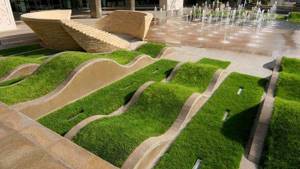
This style reproduces the spirit of 19th century English manor houses. Therefore, it is often called English style.
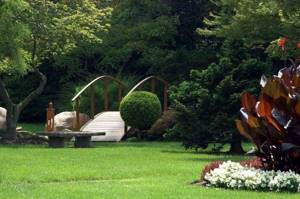
The most important element of this style will be a carefully maintained lawn (which will have to be monitored almost daily) and vertical gardening with the help of vines.
All kinds of flowers create lovely flower beds; neat thujas or junipers, jasmine or elderberries are grown from shrubs.
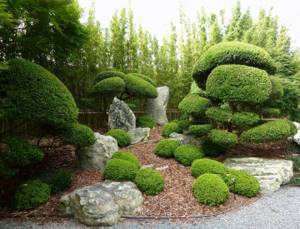
Small ponds with bridges, natural benches, gazebos, and arches are used as additional decoration.

Landscape style should leave the impression of slight disorder.
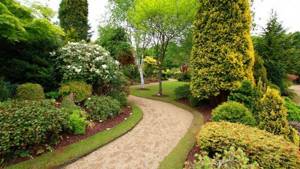
It is better to implement it on plots of more than 12 acres. In a more modest English-style garden, it is better to decorate only part of the area.
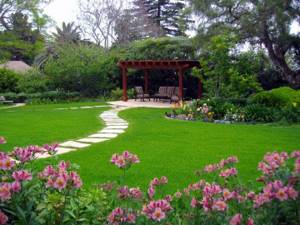
Water in the landscape of a Japanese garden
Water has a sacred meaning in Japanese culture.
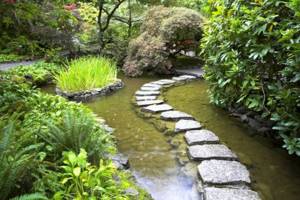
Only water has any movement in a garden of this style. It occupies the main place in the Japanese garden. Therefore, it can be found in many gardens, where residents of the Land of the Rising Sun watch for hours the movement of water masses.
The most favorite place of the people of Japan is the waterfall, which symbolizes the beginning of human life. The ponds should not be deep, this is carefully monitored, because they are not intended for swimming. Sometimes several fish can be put in there.
The bottom is laid with stones, and various unnatural parts are masked with plants, small stones or mosses. But we must remember that this is a natural park, therefore, all lines and edges of the reservoir must be natural.
The pond can be supplemented with islands with or without plants, or wooden bridges - symbols of the path of life. It must be remembered that the reflection in the water should be as compositionally beautiful as the coastline itself.
Site planning basics
Depending on the terrain, there are two types of garden layout:
- flat (suitable for small areas);
- hilly.
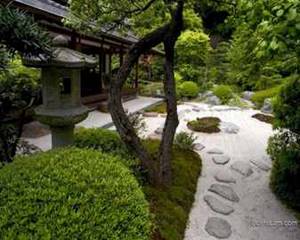
For the Japanese style, elements of water and stone are required. Water is a pond, stream, fountain, it all depends on your financial capabilities. The stones represent mountains; there can be from one to a dozen of them, if the territory allows.
Much attention is paid to paths, bridges and gazebos. Plants in such a garden are not the main component. Therefore, they should not be too pompous. Moss and monochrome low flowers, “weeping” trees, modest green shrubs - these are its characteristic inhabitants.
Photo:
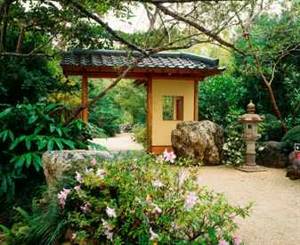
Plants for the Japanese landscape
The Japanese garden is intended to be a place of peace and reflection, therefore, unlike other gardens, it is not customary to use bright colors in landscaping.
Landscape design in the Japanese style can use calm shades of gray, green, white and brown; for accents, of course, bright colors are introduced, but the minimum number of shades is 1-2.
Halftones and shades of the same color are very welcome. Only natural colors are the right solution. To add these shades to the panorama of the garden, you should plant coniferous trees and shrubs of various species: the most used are:
- pine trees (Pinus), symbol of courage,
- cypress trees (Cupressus),
- junipers (Juniperus),
- arborvitae (Thuja) and other various species of dwarf conifers.
Deciduous trees can include:
- cherry (Prunus),
- ornamental apple tree (Malus),
- different types of maple (Acer) - wisdom,
- willow (Sálix) – modesty and obedience.
Evergreens must also be present so that the appearance of the garden is covered with greenery all year round, for example, azalea or magnolia.
Among the shrubs you can choose, for example, Japanese quince (Chaenoméles japónica), deutzia (Déutzia), boxwood (Buxus), euonymus (Euonymus), black alder (Álnus glutinósa), Japanese rhododendron (Rhododendron molle subsp. japonicum).
Features of landscape lighting
You can understand the essence of the art of creating a Japanese-style garden only by immersing yourself in its atmosphere
A Japanese-style garden will never be logically complete if it does not have thoughtful lighting. In large gardens, tachi gata is certainly used. These lanterns range in height from one and a half to three meters and can illuminate large areas. Near Tsukubai you can often find hidden lanterns - ikekomi-gata. Their light is directed downward, which helps maintain an atmosphere of twilight and mystery. The outline of the ponds is marked with tiny oki-gata, and yakimi-gata can be installed near other bodies of water.
You can understand the essence of the art of creating a Japanese-style garden only by immersing yourself in its atmosphere. In Russia, this can be done in the Main Botanical Garden. The corner of Japan here was reproduced in 1987, is considered a type of tea garden and has a special atmosphere that is pleasant to plunge into in any season. Walking along it, a person spiritually prepares for the tea ceremony.
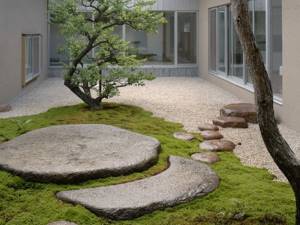
Japanese style garden
